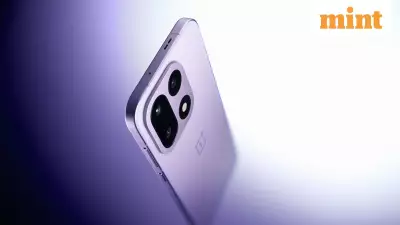
In a groundbreaking shift for consumer electronics manufacturing, Apple has quietly implemented 3D printing technology to create titanium chassis for its Apple Watch Ultra and Series 11 models. This innovative approach marks a significant departure from traditional manufacturing methods and could set new standards for how premium devices are produced.
The Powder-to-Precision Process
Instead of cutting or stamping metal blocks, Apple builds each watch case layer by layer using an advanced 3D printing technique. The process begins with ultra-fine titanium powder that measures just 50 microns across and is sourced from recycled materials rather than newly mined ore. This choice reflects Apple's commitment to sustainability while addressing cost considerations in a market where every gram matters.
Inside Apple's industrial printers, six high-powered lasers work simultaneously, sweeping side-to-side to fuse the titanium powder into solid metal. According to Tom's Hardware, each layer measures precisely 60 microns, and creating a single Apple Watch case requires building 900 successive layers. This method provides far greater detail than conventional stamping or carving techniques while dramatically reducing material waste.
The environmental benefits are substantial. Apple states that this new manufacturing approach cuts titanium requirements by half compared to traditional methods, saving more than 400 metric tons of metal annually. Most unused titanium powder can be collected and reused for subsequent production cycles, minimizing resource consumption.
Post-Printing Precision and Quality Control
After the printing process completes, the manufacturing continues with meticulous finishing steps. Unused powder gets vacuumed away, and an ultrasonic cleaner removes any remaining debris from even the most intricate interior channels. Each chassis is then precisely separated from the build plate using a specialized wire cutting technique, with coolant jets preventing metal warping during this critical phase.
Quality assurance represents another crucial step in the process. Every component undergoes optical scanning to verify that dimensions and surface finish meet Apple's exacting standards. This comprehensive inspection ensures that each watch case maintains the premium quality consumers expect from Apple products.
Beyond Manufacturing: Technical Advantages and Future Potential
The benefits of 3D printing extend beyond material savings and environmental considerations. For cellular-enabled Apple Watch models, this technology enables the direct printing of intricate interior textures where metal meets plastic components. This integration enhances sealing effectiveness and even improves radio wave transmission—creating a more seamless connection between materials that traditional manufacturing cannot achieve.
Despite these advantages, scaling this technology presents challenges. Titanium powder can oxidize and form clumps over time, and the recycling process requires significant energy input. However, Apple views this implementation as just the beginning of what's possible with additive manufacturing. The company suggests that continued refinement of alloy blends and powder recycling techniques could lead to 3D-printed titanium appearing in more Apple devices in the future.
This manufacturing innovation represents a significant milestone for consumer electronics, where 3D printing has typically remained a niche application. As Apple demonstrates the viability of this approach for mass production, other manufacturers may follow suit, potentially transforming how high-end gadgets are made across the industry.





